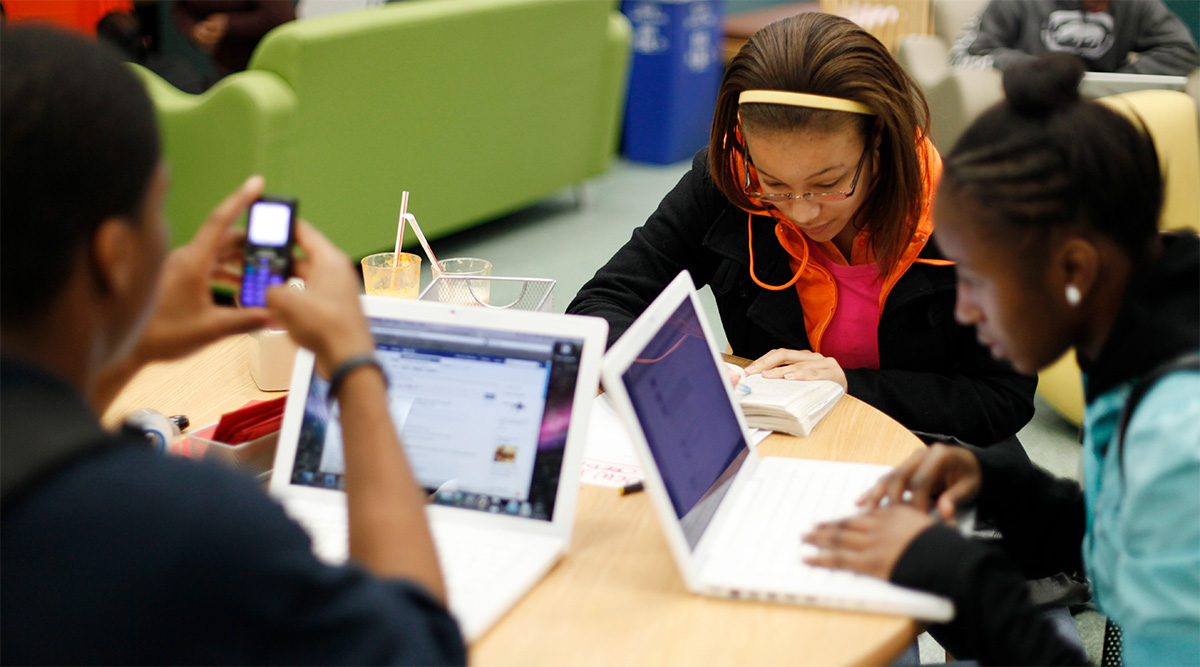
Summary
From 2004 to 2018, we made 327 grants totaling $242.5 million.
From 2004 to 2017, the Digital Media and Learning initiative supported research and design experiments to better understand how digital media are changing the way young people learn, play, socialize, and participate civically and how those insights could be used to improve education. A new approach called Connected Learning emerged from this grantmaking as a powerful new framework for designing learning that is engaging, relevant, and prepares young people for a highly connected, technology-enabled 21st century. Connected Learning contends that the most powerful learning happens when it is:
- connected to young people’s interests;
- enables them to connect with their peers, and;
- is relevant to their lives.
To scrutinize the Connected Learning model and its application in both classrooms and informal settings, the Digital Media and Learning initiative also supported research about assessing the impact of Connected Learning on outcomes for youth, as well as design experiments in libraries, museums, and other informal learning environments to pilot and test new teaching and learning tools, curricula, and approaches based on the Connected Learning framework. It launched Cities of Learning, a national effort to pilot these experiments at scale in cities across the country and test a new approach to credentialing learning called “digital badges.” Determining that the scale of Connected Learning required a new set of investors and partners, alternative funding models, and a more entrepreneurial ethos, MacArthur funded the launch of a new organization, LRNG, as the final phase of the initiative. This new organization took on the responsibility of scaling Connected Learning, digital badges, and other promising innovations seeded through the initiative.
History of the Program
We have invested in education since 1980, but direct investment in schools met with mixed results and few clear successes. In the 1990s, we awarded more than $40 million in grants in Chicago, working to develop more skilled teachers and better principals. In 2000, we sought national impact with The Learning Partnership, a $40 million school district reform initiative in Chicago, Minneapolis, and Baltimore. Three years into that effort, numerous superintendents had cycled through the three districts with little improvement in students’ educational experiences or performance.
In 2004, we decided to consider alternative paths. Instead of focusing on schools and school districts, we turned our attention to how young people were learning outside school. Digital media and the internet seemed to be sparking new ways of creating, sharing, and organizing knowledge.
We decided to investigate this topic. Site visits, a literature review, and modest exploratory grants suggested that it would be a promising area of work. In June 2005, our Board of Directors established Digital Media and Learning as a new grantmaking area, which launched in 2006.
Phase 1 (2005–2009)
In this phase, we focused on inquiry and raising awareness. We wanted to understand how learning is changing as a result of digital media and asked:
- How are young people changing as a result of their use of digital media?
- How are learning environments changing? How should they change in the future?
- How are civic and social institutions changing? How should they change in the future?
Research we funded received widespread attention; we established a research hub at the University of California, Irvine, which has become a vibrant intellectual center; and programs we supported such as YOUmedia Chicago, Quest to Learn, and the Hive learning networks in New York and Chicago generated significant interest from schools, other learning institutions, and government. This success persuaded us to launch a second phase in September 2009.
Phase 2 (2009-2013)
In this phase, we made a transition from exploration, research, and raising awareness to a goal of influence and impact. We began supporting a number of demonstration sites to test and scale the concepts of Connected Learning, the program’s framework for reimagining learning for the digital age. In an effort to capture learning in informal settings, the Digital Media and Learning program also funded the development of an innovative new online credentialing tool called digital badges. Digital badges represent skills, interests, and achievements earned by an individual through specific projects, programs, courses, or other activities. The belief was that digital badges could help make learning that takes place in museums, libraries, and afterschool programs more visible and, by doing so, connect these experiences to each other and to classroom activities.
Phase 3 (2013 – 2017)
One promising approach that emerged in Phase 2 was Cities of Learning. This national movement sought to transform the learning landscape in a city by using badges to connect in- and out-of-school learning and highlight alternative pathways to academic, civic, and career success. The goal of Cities of Learning was to create the conditions necessary for Connected Learning to take root and spread. Data gathered through badges helps provide a more holistic view of what a young person is learning, where they engage in learning, what they are interested in, and whether city resources are distributed equitably to offer learning programs where they are needed most.
Our Work’s Legacy
Bringing Connected Learning innovations, its principles, practices, and products to scale quickly will require new partners—public and private—for a wide range of purposes. Scale and sustainability will require new levels and new types of investment. We believe that the best way to achieve these goals is to experiment with a new organizational model that can attract a more diverse set of partners and investors, explore alternative funding models and mechanisms, and accommodate a more entrepreneurial and innovative approach to philanthropy. Out of these efforts, in October of 2015, we launched Collective Shift, an independent nonprofit organization whose initial goal was broad adoption of the principles, practices, and products of Connected Learning. Collective Shift’s LRNG initiative has since merged with Southern New Hampshire University to deploy community-based education strategies across the United States.


